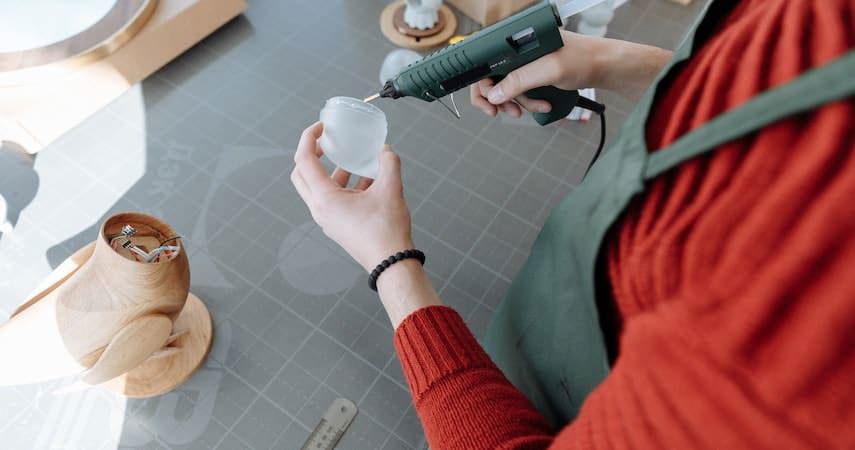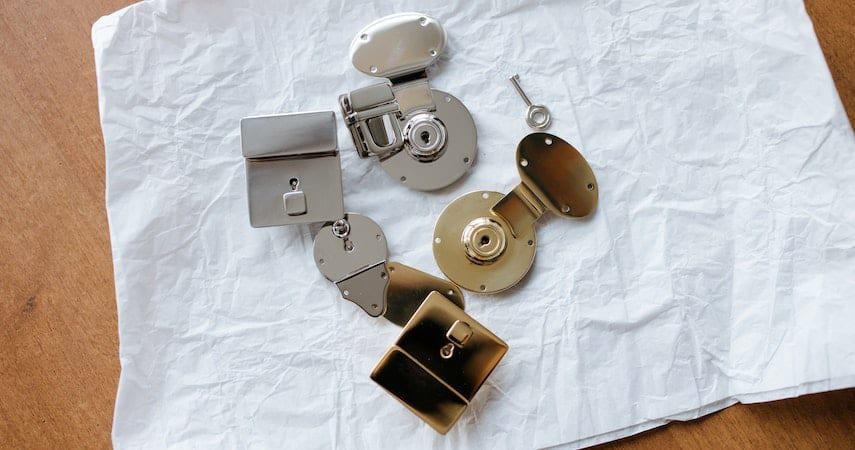
Kitting in manufacturing ensures that all the elements of a product or sub-assembly are organised and ready to go in advance of a build. As a result, the manufacturing process is more streamlined.
But kitting isn’t so straightforward.
It requires thoughtful planning and management of all the parts and processes involved in creating a finished product, or else you risk inefficiencies that dig into your profit margins.
Stick around as we explain the various kitting processes, definitions, and best practices with examples and actionable advice.
What is kitting in manufacturing?
In the context of manufacturing, kitting refers to the gathering and organisation of the parts, materials, and tools needed to deliver a specific product or goods which will later be sold to customers.
Think: assemblies, sub-assemblies, and product bundles.
If you’re using smaller parts to create a bigger part that can be sold to consumers, that process likely falls under the definition of kitting. The goal of kitting is to streamline these processes by ensuring everything needed is at your fingertips.
When using manufacturing software, this can refer to retrieving and preparing the line items in a bill of materials (BOM) to be converted into a single stock-keeping unit (SKU). On the factory floor, it can simply mean collating the goods required for a product bundle.

Kitting and assembly
Kitting and assembly, though often confused, deal with different tasks within the greater production process.
In manufacturing, kitting happens before assembly. It is the collection and presentation of all the parts needed for an assembly or sub-assembly before it is built. Assembly, on the other hand, is the process of physically combining the items in a kit into a single SKU.
Kitting and fulfilment
As with kitting and assembly, kitting and fulfilment are interrelated, but unique, processes.
Fulfilment refers to the process of fulfilling customer orders. It encompasses everything required to get goods to the person who has ordered them, from inventory management and packing to customer service.
Kitting, therefore, slots into the order fulfilment process wherever product bundles are concerned. If goods do not need to be kitted to fulfil an order, then kitting does not play a role in order fulfilment.
Kitting process in manufacturing
The kitting process in manufacturing begins with understanding all elements of the product you’re preparing for sale. This includes raw materials, parts, tools, and labour requirements.
Then you gather up those elements into kits and match them with the labour required to ensure manufacturing is streamlined and products are created cost-effectively.
Here’s a summary of how the kitting process works in manufacturing:
- A customer order or job request for a kitted product is converted into a bill of materials which is relayed to the factory floor.
- The floor staff pick, or (if necessary) build, the required line items from the BOM.
- The components or ingredients are brought to the kitting area ready to be converted into a sub-assembly, assembly, or product bundle.
The exact process might look a little different depending on how your business operates. But the core principle is the same: gather and present all the parts required to take a work order to the next step.
5 practical benefits of kitting
The kitting process exists to make manufacturers’ (and retailers’) lives easier.
If you’re the type of person who likes to have tomorrow’s clothes laid out at the foot of your bed every evening, you already understand the benefits of kitting.
Getting ahead of things now means more time savings in the future.
These are the 5 biggest benefits of kitting:
- It makes operations more efficient. When everything you need to build a product or complete a bundle is right at your fingertips, there’s less downtime wasted trying to find it. Recall how frustrating it can be to realise you’re out of flour, midway through baking a cake. Now compare this with the ease of using an out-of-the-box cake mix.
- Kitting reduces errors. It’s harder to get things wrong when all the elements of a product are lined up and ready to use. Kitting also facilitates better quality control – with everything pre-kitted, there are fewer variables that can lead to inconsistent quality.
- Simplified inventory management. Kitting turns many SKUs into one – accelerating the picking process. Plus, it’s simply quicker to count the number of kits than to tally all the bits and bobs required to manufacture a product.
- Higher productivity. If everything is to hand, productivity is higher. Production processes are faster and more efficient when less time is wasted gathering parts, enabling your team to get more things done in a single day.
- It reduces production costs. The cost to manufacture a product is largely influenced by the labour that goes into it. When assemblies or sub-assemblies are more readily available to be built, those time savings convert directly into cost savings which can help grow your profit margins.
To take it a step further, you can increase the effectiveness of your kitting by automating the paperwork using cloud manufacturing software. This adds another layer of efficiency to your production line processes.

The role of kitting in supply chain management
We’ve explored the benefits for manufacturers, but kitting offers advantages for each link in the supply chain as well.
Kitting is a valuable tool for optimising supply chain management. A business that purchases kits, for example, will have fewer SKUs to manage. Recipients of kits from suppliers can spend less time putting them together themselves, which can ease supplier relationships.
Distributors in the supply chain will benefit from pre-kitted goods thanks to reduced labour costs, as less time is spent on daily warehouse management activities such as receiving, putaway, and order picking.
And what about returns?
As you might’ve guessed, the returns management process becomes more streamlined when dealing with kitted or bundled customer orders. The entire kit is returned to the supplier, who now only needs to deal with the replacement or refund of a single finished good.
Finally, kitting also enables more efficient customisation within the supply chain.
If there is a certain product which is in demand, you can ask the supplier to kit all the required elements and deliver them to you for manufacturing and on-sell. You can also request kits be adjusted at the supplier end to meet changing customer demands or trends.
Types of kitting in manufacturing
There are two main types of kitting in manufacturing: material kitting and product kitting.
Here's a quick explanation of each type:
- Material kitting, also called parts kitting, refers to bringing together the various parts, ingredients, and raw materials needed to create a product for sale. This is the method that is common to manufacturing organisations.
- Product kitting, also called product bundling, involves combining finished goods to create a new product with a unique SKU. For example, placing an undershirt with an overshirt to create a two-shirt combo that customers can purchase at a lower price than if they bought the two items individually.
Let’s look at a few other types of kitting you might encounter in manufacturing.
Inventory kitting
Inventory kitting is when inventory is organised into kits that can be sold or used for another purpose. These kits are assigned their own SKUs and storage locations. Inventory kitting is also common in retail and distribution organisations that offer bundled goods.
Warehouse kitting
Warehouse kitting is inventory kitting in a warehouse setting. The main difference between warehouse kitting and kitting in a manufacturing facility is that it focuses on finished goods rather than parts or ingredients. Kits in warehouses can be sold to retailers or end customers quickly, helping improve order fulfilment efficiency.
Product bundling
Product bundling is a customer-centric type of kitting. It offers many benefits for both sellers and buyers of product bundles. Merchants that offer bundled goods can combine top-sellers with slow-selling products to effectively clear old stock. And customers of product bundles can enjoy discounted prices and faster shopping experiences.
Custom kitting
Customisation is another type of kitting. Bespoke items or product alterations can be provided to the customer either directly from the manufacturer or ordered through a supply partner. Custom kitting enables businesses to offer more variety in their products without paying additional labour costs.
Kitting packaging
Kitting packaging refers to packing materials that are either kitted together (for a faster shipping process) or that are specially designed for holding product kits. Since kitted goods are kept together, they can reduce the number of boxes or envelopes required to ship the final product.
Kitting services (3PL kitting)
Kitting services, or 3PL kitting, is a type of kitting wherein a third-party provider helps with the kitting process. A manufacturer can seek labour support or specialist advice from a kitting service provider, such as a third-party logistics (3PL) company. Kitting services allow businesses to spend less money on their own storage facilities and less time on in-house order fulfilment.

Kitting examples
Kitting can be found in many business models across myriad industries.
However, it can look a little different in different sectors. In eCommerce or retail, for example, product kitting is quite common. Meanwhile material kitting can be found at the manufacturing end of the supply chain.
Here are some industry-specific kitting examples:
- Vehicle manufacturing – Car manufacturers often use kitting to ensure their production lines are as efficient, safe, and consistent as possible. Modules within the vehicle assembly process also draw on kitting to streamline tasks such as painting and polishing.
- Pharmaceutical production – The drug industry frequently uses kitting to streamline the production of its goods. The production of a specific medication often requires many ingredients and packaging. Kitting helps fast-forward the preparation of such items.
- The electronics industry – Electronic goods are often comprised of smaller parts and sold in bundles. Think of all the parts and selling combinations around smartphones, laptops, and video game consoles.
- The furniture industry – Kitting has become commonplace in the furniture industry, especially for companies selling direct-to-consumer (D2C). IKEA famously sells most of its products as kits, wherein the end customer is expected to assemble items when they get home.
- eCommerce – Kitting is also a popular online sales strategy. For example, hair and skin care products are frequently bundled together to increase average order value or clear dead stock.
- Food products – At one end of the food supply chain, kitting is used to turn ingredients into meals, and also for packaging and labelling. On the other end, meal kits are an example of how customers can benefit from kitting within their own homes.
These kitting examples demonstrate the variety with which the kitting process can be implemented to improve efficiencies and qualities across the entire supply chain.
Parts kitting best practices
Parts kitting is such an efficiency-boosting strategy that you’ll want to make sure you’re doing it the right way. Below are some effective parts kitting best practices that will help you take maximum advantage of the benefits of kitting.
1. Create a clearly defined plan
Kitting can be a complex process. It may not be immediately clear what needs to be kitted together or the best way to go about it. Start asking questions like:
Should fragile components be included with the raw materials? Will time be saved or lost by creating kits? What do we need to do to ensure our system can track kitted goods?
Test your assumptions – you could literally time yourself and experiment with the process, or just run it by your team for a majority-rules decision – then use your learnings to form a solid kitting strategy for each SKU.
2. Use precise and effective packaging
Once you have defined what needs to be kitted together, clearly label what is in each kit.
You may also need to create a standard operation procedure (SOP) that explains how to assemble kits once their smaller parts have been collected.
Without clear labelling and instructions, your risk of human error will be higher. Kitting packaging needs careful consideration so that the assembler doesn’t need to dig into the bottom of a very large box to find the first item they need.
3. Use accurate documentation
Another key element to support the success of a parts-kitting strategy is documentation. Without accurate documentation, the process simply falls apart.
Cloud-based bill of materials software enables kits to be tracked and managed digitally with perfect accuracy. This means you can instantly access a dashboard that displays all the components needed for a kit and convert BOMs into assemblies once they’ve been built.
Check out the module demo below to see how BOM management software can aid in kitting and building assemblies.
4. Focus on effective inventory management
Inventory management plays a fundamental role in parts kitting. How you manage your kitted inventory directly affects the amount of time and money it saves you.
Store high-turnover kits on lower shelves or closer to the packing and assembly areas to minimise walking time.
Implement inventory management software to track the movement and status of kits. Stock control systems can also help you make smarter purchasing decisions by setting optimised reorder levels for each product.
This increases your ability to build complete assemblies and dispatch orders in full and on time.
